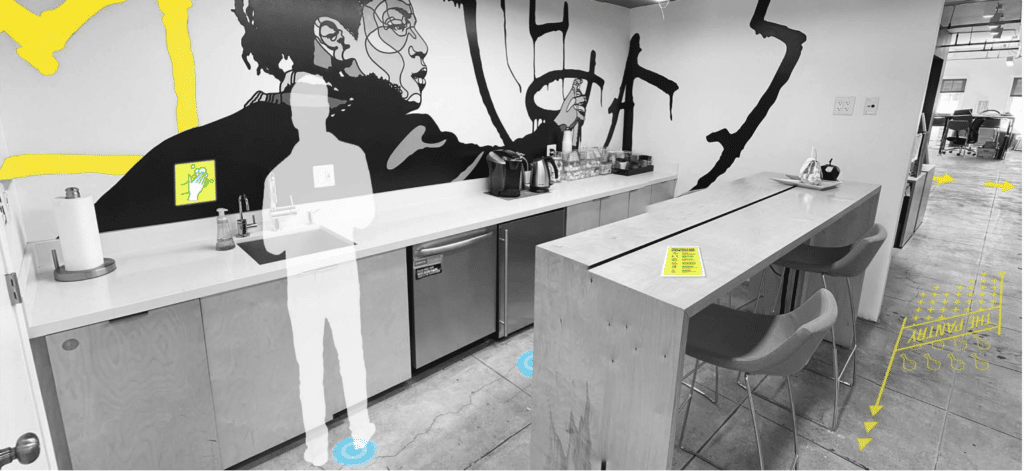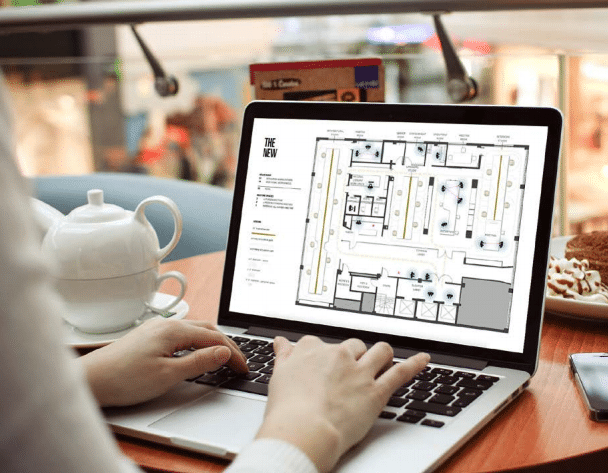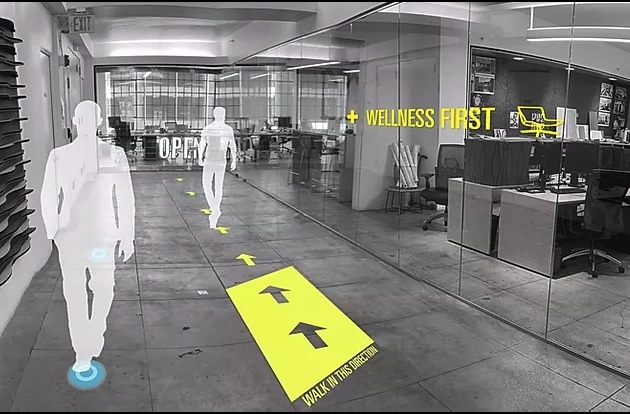As we expect to approach a safe return to the office, it’s important to ask: Is this a simple question of Work From Home versus Return to the Cubicle? What is the right balance to optimize productivity, promote collaboration and make people feel safe? Leading Los Angeles based boutique architecture firm, Wolcott believes it’s a balancing act.
Creating more effective WFH environments that co-exist with an Office Re-Entry plan involves two key points:
- Helping employees create more effective WFH environments
- Creating Office Re-Entry packages that support reasons why people should return
Is Densification Over?
A growing consensus suggests that the return to work will require de-densification in order to insure safety through distancing. Of course, that goes against a trend over the last several decades in workplace design promoting greater density. That’s included open floor plans, shared desks, and creating more opportunities for informal social interactions that could spark collaborative thinking.
Office Re-Entry plans obviously need to prioritize which employees need to or should come back. Additionally, they need to prioritize which behaviors need to or should happen in the office.
Returning to an office in a plastic bubble cubicle surrounded by plexiglass may not make the most sense. People will likely feel more preoccupied by safety than getting work done.
But before we move from one extreme to the other, let’s consider the options.

Many People Prefer WFH, But Not All
Work From Home can be good, bad, or ugly. Understanding the variety of WFH experiences can help us discover optimal solutions.
According to economists at University of Chicago, 37% of all jobs in the United States can be performed entirely at home, with higher percentages in tech industries and white collar oriented urban regions like Los Angeles or Silicon Valley.
A recent Gallup poll reported that 62% of employed Americans have worked from home during the crisis. That represents roughly double the number working from home prior to the pandemic, as recently as mid-March. Further, Gallup found that around 60% of American adults now working from home would prefer to continue doing so “as much as possible” after the pandemic ends.
But the news is not all rosy, either. In April, an employee survey by Eagle Hill Consulting found that about 45% of workers saying they were starting to feel “burned out” from their WFH experience. “America’s always-on work culture has reached new heights,” a Bloomberg article warned. “Whatever boundaries remained between work and life have almost entirely disappeared.” Other articles and studies have noted other WFH drawbacks, including inadequate childcare and how gender inequalities may be exacerbated in daily online interactions.
How To Do WFH Right
In 2015, two Stanford Business School professors conducted a 9-month WFH study of a Shanghai-based firm. Workers in the city dealt with heavy daily commute times (40 minutes each way on average) and high cost office real estate. In their study, they created guidelines for how to properly work from home. They set up employees with a dedicated home work space, the room could not be a bedroom, and nobody was allowed into the room during the workday except for the employee.

The experiment also asked employees to work from home four days a week and come into the office every fifth day. That’s because the company recognized in-person collaboration as necessary for creativity and innovation.
The WFH research experiment was a huge success. It led to performance increases and greater work efficiency per shift (fewer breaks and sick days). Home workers also reported improved work satisfaction, and their attrition rate was cut in half. The ROI was impressive, too: the company reported that it made about $2,000 more profit per employee at home.
However, after becoming an advocate for work from home, the project’s lead researcher Nicholas Bloom has recently expressed concerns about WFH during the pandemic. He does not believe working from home will necessarily yield the same results for most American workers. Why? “Many people I have been interviewing are now working in their bedrooms or shared common rooms, with noise from their partners, family or roommates,” he says. “We are home working alongside our kids, in unsuitable spaces, with no choice and no in-office days.”
In conclusion, WFH solutions need to be carefully coordinated with Office Re-Entry packages to allow the right teams to gather back at the office. Identifying and prioritizing the kinds of interactive activities that will generate the most value for your organization is going to be one of the best places to start.

Wolcott Architecture
Los Angeles’ leading boutique firm
Wolcott Architecture’s portfolio includes successful projects for numerous commercial, corporate, entertainment, technology and retail clients. As a founding member of the ONE Global Design network, it ranks as one of the top 10 design firms in the country.


